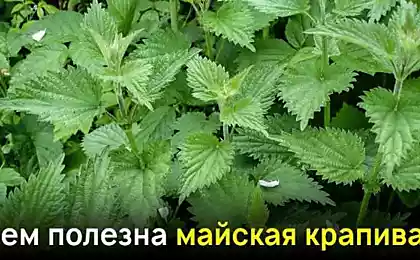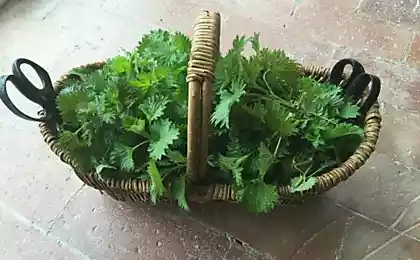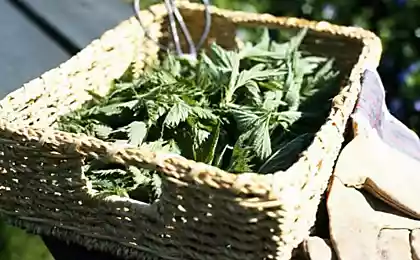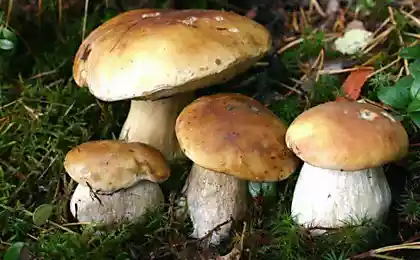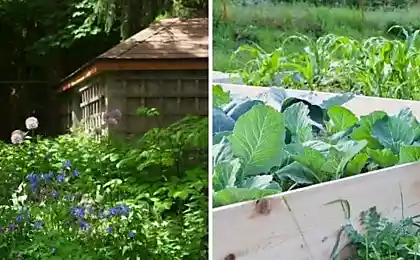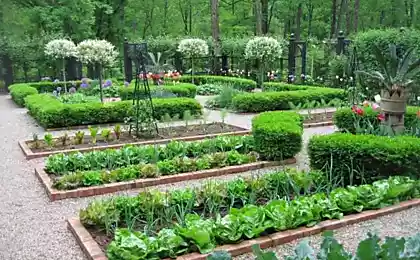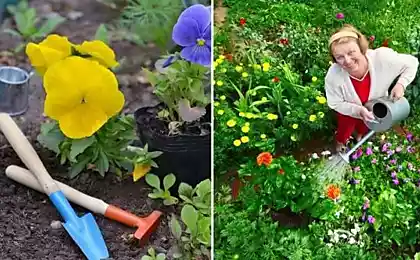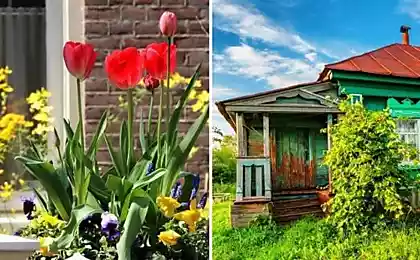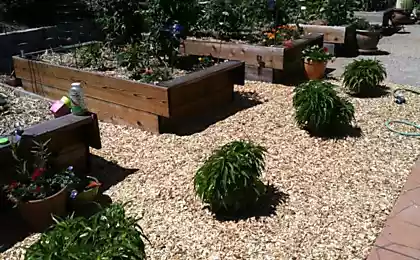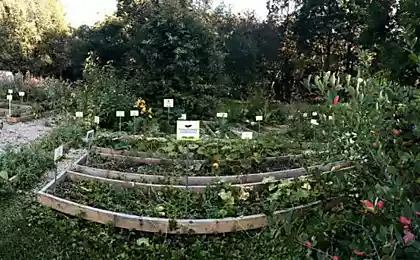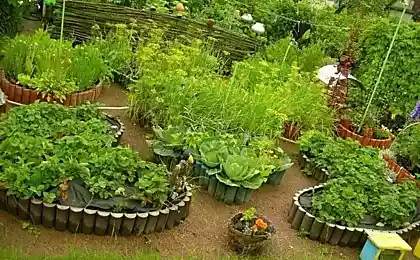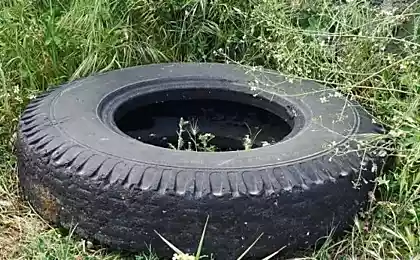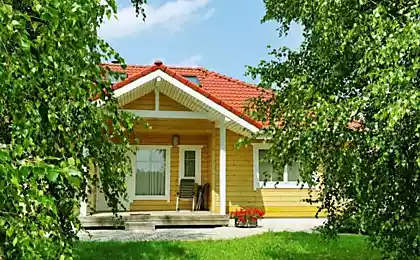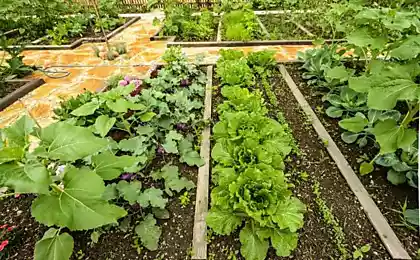211
Instructions for combating weeds in the suburban area
Spring in the country is beautiful. Everything smells, turns green, blooms. Birds sing, and the soul becomes good. The only concern of the gardener is weed. Swan, nettle, wheatgrass grow with great speed, so weeding - a task of paramount importance.
View this post on Instagram
A mobile garden bench!? Agree, it looks very original. Such a bench is very convenient to move from place to place, changing the location on the site. As a basis of the bench for giving, you can take the usual design of the bench, add handles and a wheel from a wheelbarrow to it.
A post shared by Dacha, garden, garden, tips (@dacha_sovet) on May 8, 2020 at 11:40pm PDT
How to get rid of this headache without using chemistry? There are different ways to deal with weeds, and some of them we will now look at.
First of all, let’s determine the main threat of the summer resident. This is not nettle, because it loves rich soil and already on it reaches huge sizes. Not a swan, because it needs loose black soil, otherwise it will not be found with fire during the day. Not even wine and wormwood, from which craftsmen make various useful ointments and decoctions.
View this post on Instagram
Beautiful, it's a pity that weeds!)#Krasnodar region #naturecuban #weeds #domvviry #removedvrasnodar #relocation
A post shared by Village Life! (@village_life_krasnodar) on May 4, 2020 at 9:14am PDT
The main problem of the summer resident is wheat. This herb reproduces immediately with seeds and creeping rhizome. It reaches a meter in height, and if its roots are damaged, for example, by a shovel, it will immediately respond with the appearance of a bunch of new plants. But it is still possible to defeat such a tenacious enemy. There are several ways.
View this post on Instagram
All weed plants have enviable vitality and endurance. And especially from them stands out the creeping wheat. The Latin name of this plant, malignant weed - Agropyron repens in translation means - the fire of the fields creeping, for the farmer and gardener, the creeping wheatgrass (Elitrigia repens) turns into a constant nightmare. The word - wheatgrass, comes from a very ancient Proto-Slavic root - pyro - bread, rye and, indeed, under certain conditions, it is able to justify this name. Dried roots are suitable for obtaining flour, from which porridge, jelly, beer are baked, bread is baked. From fresh rhizomes, salads, side dishes for meat, fish and vegetable dishes are prepared, soups are cooked. Coffee is made from rhizomes. In folk medicine, wheatgrass is used for coughing, as well as a diuretic, it removes uric acid from the body and is recommended for gout and rheumatism. Medications from the rhizomes of the wheatworm have blood-purifying, enveloping, expectorating, sweatshopping and light laxative properties. The most important indications for the use of wheatgrass rhizomes in folk medicine are anemia, rickets, liver and gallbladder diseases, inflammation of the stomach and intestines, skin rashes and complaints associated with menstruation. The juice of fresh wheatgrass leaves is used to treat colds, SARS, bronchitis, gallstones and urolithiasis, pneumonia. Healing baths with an infusion of grass of wheatgrass creeper are recommended for skin diseases (red flat lichen and bubble dermatitis), rashes, hemorrhoids and hemorrhoids, and for chronic constipation, enemas are recommended. Crawling wheat is a good remedy for diseases with impaired salt metabolism, metabolic arthritis and osteochondrosis. Preparations of wheatgrass creep quickly cure boils, help with juvenile acne and other skin diseases. Systematic intake of the plant helps to reduce cholesterol levels in the blood. It is believed that silicic acid, which is found in wheatgrass, contributes to accelerated tissue regeneration, strengthening the walls of capillaries, reducing inflammatory processes. Read more: ok.ru/group/53086895013975/topic/151358825125975 #dust #natural medicine #orvi #pneumonia
A post shared by Healing_powers_of_plants on May 8, 2020 at 2:16am PDT
Best of all, this method is suitable for the area where the wheat is still Didn't have time to grow. For it, you need to use not a shovel, but a fork, since a shovel can leave a particle of the root system in the soil. And this is already fraught with a response and the growth of weed on a giant scale. Forks uproot the plants, shake off the roots of the soil and burn or take out of the site. This is a difficult but effective method.
View this post on Instagram
Forks - agricultural hand tools, also called - the weapon of peasants. It turns out that there was even a so-called “fork uprising” of peasants in February-March 1920. But don't worry, I've taken on well-intentioned species to dig up potatoes. From the beginning I tried the usual way, but the ground is so damp that it sticks to the shovel. So I decided to change the tool. And now, the mission is completed, you can rest! And for those who still dig, hold on. #Rybinsk #vila #garden #potato #restIndeed #Summer Back #hurrah
A post shared by Leontiev Oleg (@oleg_leontyev) on Aug 17, 2019 at 6:10am PDT
The use of a cultivator is a long way, but also quite reliable. The point is to walk the cultivator on the entire surface of the site and grind the weeds. Of the remaining roots, of course, new plants will grow, but frail and young. Here they already need to collect manually and get rid of the weed for a long time.
View this post on Instagram
Robot #cultivator
A post shared by Sergey (@viqm2.0) on May 4, 2020 at 8:38am PDT
Peasants do not like legumes because these plants have root. After plowing and loosening (if you practice them), scatter seeds of peas, beans, corn or radishes. They will strangle the roots of the wheatgrass and shade it.
View this post on Instagram
I went to water the garden ) Tomatoes 1. Died why, good that there is more! ... #garden #garden #garden #city #season #garden2020 #seedlings #seedling #nature #garden #village #vegetables #vegetables #greenhouse #precinct #garden question #quest #cakemaker #pomodor #tomat #redis #ruccola
A post shared by Olha (@olhagarden) on May 8, 2020 at 7:03am PDT
Mulching is our favorite method and we advise you to use it. You can mulch the soil from wheatgrass in three different ways. Of course, we will tell you about each of them.
Mulching or blackout. A quick, reliable way to get rid of a weed, leaving it without sunlight. Just use the special one. mulching or blackfiber. They are on the surface of the ground and the weed will go away.
View this post on Instagram
Acceptance of applications for film for mulching soil under strawberries, strawberries. The film is long-term, high quality resistant to punctures and tears, perfectly stretches, works out the full term of 36 months. Remove from the bed completely without falling apart. It is resistant to mechanical processing. Order by phone 89892667299, 8918246888 #wesnaruspolymer #production of films #strawberry film #camulching #mulch #strawberry #mulch #strawberry #multi-year film #filmpolyethylene #spring
A post shared by Spring (@vesna.upak) on May 2, 2020 at 11:50pm PDT
Manure and hay mulching. Here everything is clear from the name: mix hay with dung and scatter in the right places. The wheatgrass will not be able to get through a layer of such material and will wither. The only drawback is that especially delicate garden plants can also suffer.
View this post on Instagram
? BULCH? I will tell you about my experience and observations. In the first years of gardening, mulching seemed to me an unnecessary problem? What’s so hard about pulling out some weeds? Are there lots of weeds???????? In the third year, I watched the gardeners and decided to cover the beds with black spunbond? Here really were problems: first straight stretch, gently fasten... for something?, and then cut holes for plants. In general, was my spunbond not dense enough, or were the weeds mighty, but they bobbed right under it, lifting it? And in order to weed, to flush, you have to somehow get there. And now, finally, it came to natural materials, I mulched my beds with straw? and my happiness there is no end:? moisture does not evaporate into the air, but remains in the roots of plants, continuing to feed them? also thanks to mulche, overmoisture of air in the greenhouse / greenhouse, which provokes diseases? on the top layer of the soil does not form a dry crust, and the soil remains loose and air? weeds grow, BUT mainly these are large plants that are easily removed from loose earth, by mulchy, by the way, you can only scare out of mulch, pesters. This year I will mulch all my beds?.. #mulcha #mulching #mulching of beds #mulching of soil #mulching of grass #mulching of bark #mulching of tomats #dmitrov #tomatyvdmitrov
A post shared by? Tomatas and peppers? (@dmitrovskyi_tomat) on May 2, 2020 at 12:59am PDT
Masculine grass mulching. There is a way. 3 advantagesMoisture remains in the ground, it will not need to be watered often. No need to waste time weeding. The fertility of the earth will increase as the lower layers of grass will rot and all the elements useful to the soil will spread through it with rainwater. No cons were noticed.
View this post on Instagram
Written by @gal64_ra Future Roller zucchini, interesting name, right? Not afraid of cold, bush, excellent taste, harvestable. Seeds sprouted on #toilet paper, everyone stretched out and thought they were drying, but took a chance and planted glass jars in the open ground, mulched grass with raw, a real leaf appeared. For me, it's an experience, usually planting dry seeds in holes and mulching #pretty. #garden#succes #success #success2016 #may#surprise #growths#chemistry#ecovegetables#ecofruit#mulchinggras#mulchingsmulchurch
A post shared by uogorod.ru – community site (@uogorod) on May 9, 2016 at 9:30pm PDT
Different methods are suitable for different types of soil and climate. In addition, everyone has their own opportunities and thoughts about weed control. Some people don’t bother and just use chemistry. Our editorial office "Site" I'm happy to help you with some advice. We hope that you will gather a generous harvest without much labor, with a smile on your face and a good mood.
View this post on Instagram
A mobile garden bench!? Agree, it looks very original. Such a bench is very convenient to move from place to place, changing the location on the site. As a basis of the bench for giving, you can take the usual design of the bench, add handles and a wheel from a wheelbarrow to it.
A post shared by Dacha, garden, garden, tips (@dacha_sovet) on May 8, 2020 at 11:40pm PDT
How to get rid of this headache without using chemistry? There are different ways to deal with weeds, and some of them we will now look at.
First of all, let’s determine the main threat of the summer resident. This is not nettle, because it loves rich soil and already on it reaches huge sizes. Not a swan, because it needs loose black soil, otherwise it will not be found with fire during the day. Not even wine and wormwood, from which craftsmen make various useful ointments and decoctions.
View this post on Instagram
Beautiful, it's a pity that weeds!)#Krasnodar region #naturecuban #weeds #domvviry #removedvrasnodar #relocation
A post shared by Village Life! (@village_life_krasnodar) on May 4, 2020 at 9:14am PDT
The main problem of the summer resident is wheat. This herb reproduces immediately with seeds and creeping rhizome. It reaches a meter in height, and if its roots are damaged, for example, by a shovel, it will immediately respond with the appearance of a bunch of new plants. But it is still possible to defeat such a tenacious enemy. There are several ways.
View this post on Instagram
All weed plants have enviable vitality and endurance. And especially from them stands out the creeping wheat. The Latin name of this plant, malignant weed - Agropyron repens in translation means - the fire of the fields creeping, for the farmer and gardener, the creeping wheatgrass (Elitrigia repens) turns into a constant nightmare. The word - wheatgrass, comes from a very ancient Proto-Slavic root - pyro - bread, rye and, indeed, under certain conditions, it is able to justify this name. Dried roots are suitable for obtaining flour, from which porridge, jelly, beer are baked, bread is baked. From fresh rhizomes, salads, side dishes for meat, fish and vegetable dishes are prepared, soups are cooked. Coffee is made from rhizomes. In folk medicine, wheatgrass is used for coughing, as well as a diuretic, it removes uric acid from the body and is recommended for gout and rheumatism. Medications from the rhizomes of the wheatworm have blood-purifying, enveloping, expectorating, sweatshopping and light laxative properties. The most important indications for the use of wheatgrass rhizomes in folk medicine are anemia, rickets, liver and gallbladder diseases, inflammation of the stomach and intestines, skin rashes and complaints associated with menstruation. The juice of fresh wheatgrass leaves is used to treat colds, SARS, bronchitis, gallstones and urolithiasis, pneumonia. Healing baths with an infusion of grass of wheatgrass creeper are recommended for skin diseases (red flat lichen and bubble dermatitis), rashes, hemorrhoids and hemorrhoids, and for chronic constipation, enemas are recommended. Crawling wheat is a good remedy for diseases with impaired salt metabolism, metabolic arthritis and osteochondrosis. Preparations of wheatgrass creep quickly cure boils, help with juvenile acne and other skin diseases. Systematic intake of the plant helps to reduce cholesterol levels in the blood. It is believed that silicic acid, which is found in wheatgrass, contributes to accelerated tissue regeneration, strengthening the walls of capillaries, reducing inflammatory processes. Read more: ok.ru/group/53086895013975/topic/151358825125975 #dust #natural medicine #orvi #pneumonia
A post shared by Healing_powers_of_plants on May 8, 2020 at 2:16am PDT
Best of all, this method is suitable for the area where the wheat is still Didn't have time to grow. For it, you need to use not a shovel, but a fork, since a shovel can leave a particle of the root system in the soil. And this is already fraught with a response and the growth of weed on a giant scale. Forks uproot the plants, shake off the roots of the soil and burn or take out of the site. This is a difficult but effective method.
View this post on Instagram
Forks - agricultural hand tools, also called - the weapon of peasants. It turns out that there was even a so-called “fork uprising” of peasants in February-March 1920. But don't worry, I've taken on well-intentioned species to dig up potatoes. From the beginning I tried the usual way, but the ground is so damp that it sticks to the shovel. So I decided to change the tool. And now, the mission is completed, you can rest! And for those who still dig, hold on. #Rybinsk #vila #garden #potato #restIndeed #Summer Back #hurrah
A post shared by Leontiev Oleg (@oleg_leontyev) on Aug 17, 2019 at 6:10am PDT
The use of a cultivator is a long way, but also quite reliable. The point is to walk the cultivator on the entire surface of the site and grind the weeds. Of the remaining roots, of course, new plants will grow, but frail and young. Here they already need to collect manually and get rid of the weed for a long time.
View this post on Instagram
Robot #cultivator
A post shared by Sergey (@viqm2.0) on May 4, 2020 at 8:38am PDT
Peasants do not like legumes because these plants have root. After plowing and loosening (if you practice them), scatter seeds of peas, beans, corn or radishes. They will strangle the roots of the wheatgrass and shade it.
View this post on Instagram
I went to water the garden ) Tomatoes 1. Died why, good that there is more! ... #garden #garden #garden #city #season #garden2020 #seedlings #seedling #nature #garden #village #vegetables #vegetables #greenhouse #precinct #garden question #quest #cakemaker #pomodor #tomat #redis #ruccola
A post shared by Olha (@olhagarden) on May 8, 2020 at 7:03am PDT
Mulching is our favorite method and we advise you to use it. You can mulch the soil from wheatgrass in three different ways. Of course, we will tell you about each of them.
Mulching or blackout. A quick, reliable way to get rid of a weed, leaving it without sunlight. Just use the special one. mulching or blackfiber. They are on the surface of the ground and the weed will go away.
View this post on Instagram
Acceptance of applications for film for mulching soil under strawberries, strawberries. The film is long-term, high quality resistant to punctures and tears, perfectly stretches, works out the full term of 36 months. Remove from the bed completely without falling apart. It is resistant to mechanical processing. Order by phone 89892667299, 8918246888 #wesnaruspolymer #production of films #strawberry film #camulching #mulch #strawberry #mulch #strawberry #multi-year film #filmpolyethylene #spring
A post shared by Spring (@vesna.upak) on May 2, 2020 at 11:50pm PDT
Manure and hay mulching. Here everything is clear from the name: mix hay with dung and scatter in the right places. The wheatgrass will not be able to get through a layer of such material and will wither. The only drawback is that especially delicate garden plants can also suffer.
View this post on Instagram
? BULCH? I will tell you about my experience and observations. In the first years of gardening, mulching seemed to me an unnecessary problem? What’s so hard about pulling out some weeds? Are there lots of weeds???????? In the third year, I watched the gardeners and decided to cover the beds with black spunbond? Here really were problems: first straight stretch, gently fasten... for something?, and then cut holes for plants. In general, was my spunbond not dense enough, or were the weeds mighty, but they bobbed right under it, lifting it? And in order to weed, to flush, you have to somehow get there. And now, finally, it came to natural materials, I mulched my beds with straw? and my happiness there is no end:? moisture does not evaporate into the air, but remains in the roots of plants, continuing to feed them? also thanks to mulche, overmoisture of air in the greenhouse / greenhouse, which provokes diseases? on the top layer of the soil does not form a dry crust, and the soil remains loose and air? weeds grow, BUT mainly these are large plants that are easily removed from loose earth, by mulchy, by the way, you can only scare out of mulch, pesters. This year I will mulch all my beds?.. #mulcha #mulching #mulching of beds #mulching of soil #mulching of grass #mulching of bark #mulching of tomats #dmitrov #tomatyvdmitrov
A post shared by? Tomatas and peppers? (@dmitrovskyi_tomat) on May 2, 2020 at 12:59am PDT
Masculine grass mulching. There is a way. 3 advantagesMoisture remains in the ground, it will not need to be watered often. No need to waste time weeding. The fertility of the earth will increase as the lower layers of grass will rot and all the elements useful to the soil will spread through it with rainwater. No cons were noticed.
View this post on Instagram
Written by @gal64_ra Future Roller zucchini, interesting name, right? Not afraid of cold, bush, excellent taste, harvestable. Seeds sprouted on #toilet paper, everyone stretched out and thought they were drying, but took a chance and planted glass jars in the open ground, mulched grass with raw, a real leaf appeared. For me, it's an experience, usually planting dry seeds in holes and mulching #pretty. #garden#succes #success #success2016 #may#surprise #growths#chemistry#ecovegetables#ecofruit#mulchinggras#mulchingsmulchurch
A post shared by uogorod.ru – community site (@uogorod) on May 9, 2016 at 9:30pm PDT
Different methods are suitable for different types of soil and climate. In addition, everyone has their own opportunities and thoughts about weed control. Some people don’t bother and just use chemistry. Our editorial office "Site" I'm happy to help you with some advice. We hope that you will gather a generous harvest without much labor, with a smile on your face and a good mood.
